
Dungeonland (EX1) is a 1983 adventure module for the Dungeons & Dragons (D&D) roleplaying game, written by Gary Gygax for use with the First Edition Advanced Dungeons & Dragons (AD&D) rules. It is an adaptation of Lewis Carroll's 1865 novel Alice's Adventures in Wonderland, with the various characters from the book translated into AD&D terms.

D&D Adventurers League is the organized play association for the Dungeons & Dragons (D&D) roleplaying game which is officially administered by D&D's publisher, Wizards of the Coast. It was rebranded with the launch of D&D's 5th Edition in 2014. Prior to 2014, it was known as the Role Playing Game Association Network. The organization was originally established by D&D's previous publisher, TSR, Inc., in 1980.

The Gem and the Staff, by John and Laurie Van De Graaf, is an adventure module for the Dungeons & DragonsExpert Set. Rather than being a typical group adventure, The Gem and the Staff was designed for head-to-head tournament-style play, with players separately playing the same adventure and competing against each other for points earned by accomplishing certain goals. The adventure is only playable with one dungeon master (DM) and one player.

Jacob Franklin Mentzer III is an American fantasy author and game designer who worked on early materials for the Dungeons & Dragons (D&D) fantasy role-playing game. He was an employee of TSR, Inc. from 1980 to 1986, spending part of that time as creative advisor to the chairman of the board, Gary Gygax. He also founded the Role-Playing Games Association (RPGA) during his time with TSR.
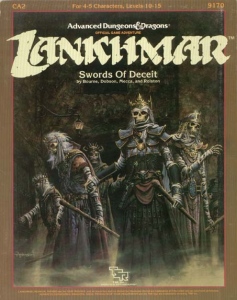
Swords of Deceit is a 1986 adventure module for the Advanced Dungeons & Dragons fantasy role-playing game, for the Lankhmar setting.

Conan Unchained! is a 1984 adventure module for the Dungeons & Dragons roleplaying game that centers on an adventure of the fictional hero Conan the Barbarian and his companions.

Rahasia is an adventure module, self-published by DayStar West Media in 1980 and published by TSR, Inc. in 1983 and 1984, for the Basic Set rules of the Dungeons & Dragons fantasy role-playing game. Its product designation is TSR 9115. It was designed by Tracy and Laura Hickman, and features artwork by Jeff Easley and Timothy Truman.
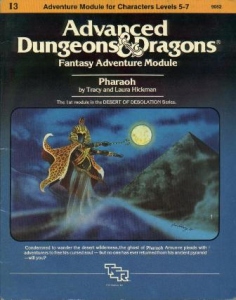
Desert of Desolation is a compilation adventure module published by TSR for the Dungeons & Dragons (D&D) fantasy roleplaying game. It combines three previously published individual modules: Pharaoh, Oasis of the White Palm, and Lost Tomb of Martek. The modules were made for use with the first edition Advanced Dungeons & Dragons (AD&D) rules. Pharaoh was created by Tracy and Laura Hickman soon after the couple married in 1977, and published by TSR in 1982. Oasis of the White Palm was a collaboration between Tracy Hickman and Philip Meyers, and Hickman wrote the Lost Tomb of Martek on his own; both were printed in 1983.

The Veiled Society is an adventure module for the Basic Rules of the Dungeons & Dragons fantasy role-playing game published in 1984. The adventure's product designation is TSR 9086.

Night's Dark Terror is an adventure module for the Dungeons & Dragons (D&D) fantasy role-playing game written by British game designers Jim Bambra, Graeme Morris, and Phil Gallagher. It was designed specifically for campaigns transitioning from the D&D Basic Set to the D&D Expert Set. The player characters (PCs) journey from a farmstead into uncharted wilderness, where they encounter new hazards and contend with a secret society. The adventure received a positive review from White Dwarf magazine.
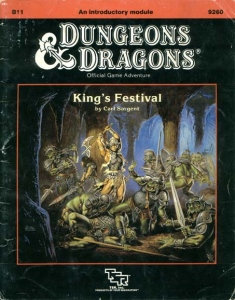
King's Festival is an adventure module for the Dungeons & Dragons fantasy role-playing game.

Lankhmar – City of Adventure is an accessory for the Dungeons & Dragons fantasy role-playing game, first published by TSR in 1985.
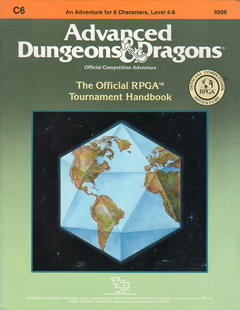
The Official RPGA Handbook is an adventure module for the Dungeons & Dragons fantasy role-playing game, set in the game's World of Greyhawk campaign setting. TSR, Inc. published the module in 1987 for the first edition Advanced Dungeons & Dragons rules. It is part of the "C" series of modules, a set of unrelated adventures originally designed for competition play.
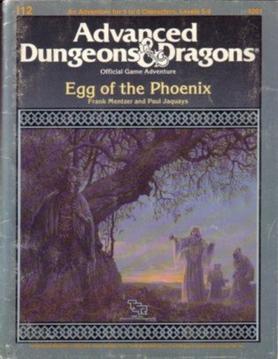
Egg of the Phoenix is an adventure module published in 1987 for the Advanced Dungeons & Dragons fantasy role-playing game.

Gateway to Ravens Bluff, The Living City is a supplement published by the RPGA in 1989 for their new Living City shared campaign world set in the Forgotten Realms using the second edition of the fantasy role-playing game Advanced Dungeons & Dragons.
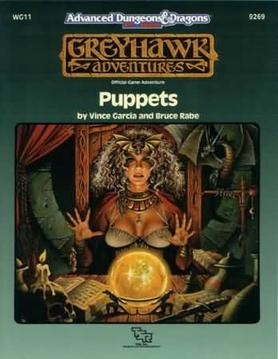
Puppets is an adventure module published by TSR in 1989 for the fantasy role-playing game Advanced Dungeons & Dragons.

Inside Ravens Bluff, The Living City is a supplement published by the RPGA in 1990 for their Living City shared campaign world set in the Forgotten Realms using the second edition of the fantasy role-playing game Advanced Dungeons & Dragons.
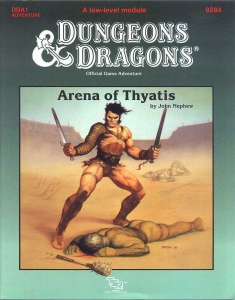
Arena of Thyatis is an adventure module published in 1990 for the Dungeons & Dragons fantasy role-playing game. This module is linked with Legions of Thyatis.

Legions of Thyatis is an adventure module published in 1990 for the Dungeons & Dragons fantasy role-playing game.



















